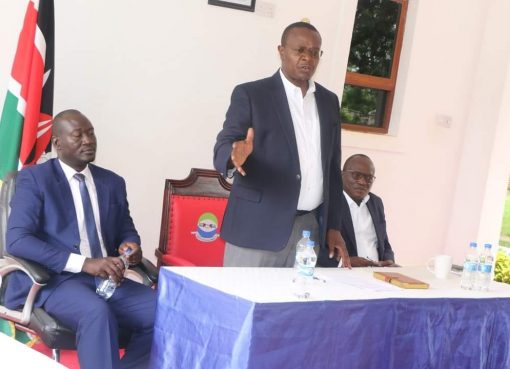Kisii University in partnership with the Kenya Marine and Fisheries Research Institute (KMFRI) hosted an Agritech International Conference which explored the role of the blue economy in Kenya’s economic growth.
The event whose theme was “Fostering research and innovation for sustainable agricultural development,” was held at Kisii University in the outskirts of Kisii town and attracted researchers and scholars from various institutions within the Lake Region.
Speaking during the function, Kenya Marine and Fisheries Research Institute (KMFRI) Director General, James Njiru, said the blue economy has a lot of potential and the government has put several mechanisms in place to exploit the growth opportunities in the sector.
“The law requires that 30 percent of the fish caught be landed in Kenya. We did not have a fish port before, but the government had now pumped millions of money in infrastructure to build Liwatoni, Shimoni and Lamu fish ports to enable fishermen to land the fish,” said Njiru.
He told the participants that despite Kenya having the potential to tap into tuna fish which migrates from Somali to Seychelles through Kenya, the country only gets about 1,000 metric tonnes of tuna fish per year compared to Seychelles which gets 200,000 metric tonnes of the same yearly.
As a result, Njiru pointed out that fish ports such as Liwatoni will not only be a hub for collecting 30 percent of fish for local consumption but also create a market for the local people.
The Director-General noted the government had also funded KMFRI to conduct a stock assessment on what is available in the ocean, saying the last stock assessment was done in 1980 by Food and Agriculture Organisation (FAO).
“Our estimates show that in terms of fisheries, we could get up to 300,000 metric tonnes. At the moment, we are catching about 26,000 metric tonnes, which is about Sh5 billion but if we fully exploit the 300,000 metric tonnes, then we can give the country up to Sh90 billion,” Njiru added.
In terms of human resources, he pointed out that the government has embarked on training young people in deep waters fishing because Kenya does not have the capacity and relies on West African countries such as Sierra Leone, Seychelles and Mauritius to get the same.
“When conducting the stock assessment, we had to import a team from Sierra Leone to come and assist us. However, the government has directed that 1,000 young Kenyans be trained every year, through KMFRI. We have already trained 300 young people so far, and another 400 be trained next year so as to have the capacity,” said Njiru.
In addition, he noted the government has improved infrastructure at Bandari Maritime College where young Kenyans are trained on maritime issues and they are in the process of establishing a Fishing School in Mombasa so that the country does not have to import human labour once they are ready to fully exploit the fisheries sector.
As part of future exploration of the blue economy, Njiru said that KMFRI had started partnering with Petroleum and Mining Departments and employing geologists and physicists to diversify their mandate by tapping into minerals and gas under the oceans as well.
He noted that he hopes the gains that had been realised under the blue economy will be maintained, especially in fisheries even as the country prepares to elect a new government in the August poll.
Earlier this month, seven-member States of the Inter-Governmental Authority on Development (IGAD) including Kenya approved the Blue Economy Strategy 2021-2025 aimed at spurring economic growth and improving the livelihood of people in the region.
By Mercy Osongo




